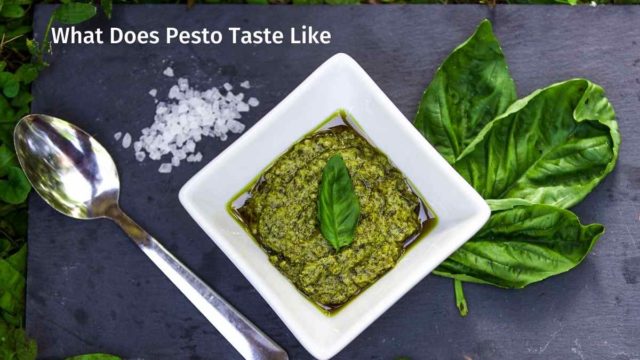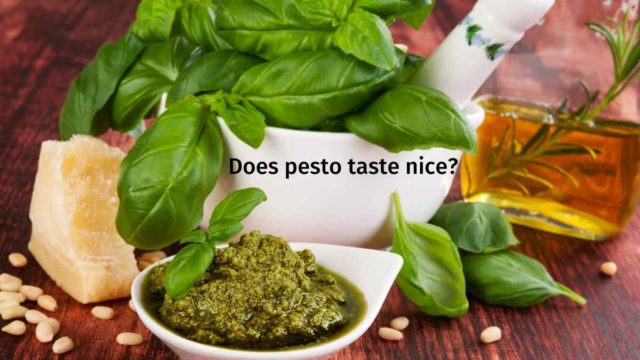What Does Pesto Taste Like?
Pesto sauce is an Italian sauce that you can serve with pasta, pizza, or as a dip. It’s a fresh and tasty sauce that goes with several dishes, but what does pesto taste like?
Pesto sauce is characterized by its bright herbal taste. The garlic adds a spicy hint, while the pine nuts add incredible crunchiness. Learn more about the delicious taste of pesto sauce.
Other Food Taste exploration articles are
What Does Pesto Taste Like?
Pesto sauce originates in the Italian city of Genoa, and it’s made of a fresh blend of basil leaves, pine nuts, raw garlic cloves, parmesan cheese, virgin olive oil, and salt. These ingredients blend together to create a homogenous paste with a slightly thick texture.
Pesto has a bright and tasty herbal taste with a buttery texture from the cheese and pine nuts and spiciness from the garlic. It shouldn’t be extremely smooth or chunky. Instead, it should have a thick yet spreadable texture, and you can modify it by altering the amount of pine nuts and cheese added.
There are unlimited variations of pesto sauce, and you can customize it based on your favorite ingredients. For example, you can replace basil leaves with parsley, kale, cilantro leaves, mint, or tarragon. Each herb will give this sauce a different taste.
You can also replace parmesan cheese with Pecorino Romano or Grana Padano. If you’re allergic to nuts, you can remove the pine nuts. Finally, you can make a new version of pesto sauce by adding sun-dried tomatoes for a unique savory taste.
How Can You Use Pesto Sauce?
The most traditional way to use pesto sauce is to serve it with pasta, but there are other innovative and delicious ways to enjoy your pesto sauce.
- Spread pesto on top of your bread and bake it.
- Add pesto sauce as a topping to your pizza.
- Stuff chicken breasts with pesto sauce and roast them.
- Add pesto sauce to a baked casserole.
- Make breakfast eggs with pesto on top.
- Serve pesto sauce as a side to your beef, salmon, or chicken.

How to Store Pesto
Pesto has a limited shelf life because of its fresh components. If you have some extra pesto sauce, follow these tips to store it properly.
- Store-bought pesto can be stored in your kitchen pantry as long as you haven’t opened the jar.
- After opening the jar, seal it properly and store it in the fridge. It can last for a week.
- For homemade pesto, you can keep it in zip-lock bags and store it in the freezer, where it can last for up to 6 months. It’ll show some change in texture, so it won’t work if you’re serving it on its own. Nevertheless, it’ll be a good choice if you’re using it to stuff chicken or in a baked dish.
Can I Substitute Arugula for Basil Leaf in Pesto?
Yes, you can substitute arugula for basil leaf in pesto sauce. The flavor profile of arugula is similar to basil, which makes it a great alternative. The advantage is the Arugula is not quite as peppery. However, you should use arugula sparingly since it has a slightly bitter taste.

How to Know that Your Pesto Has Gone Bad
If you have a fresh batch of pesto that you haven’t used for a day or two, keep an eye on the following changes to see if it’s gone bad.
- Look at the sauce. If the bright green color has become darker or turned brown, it’s time to throw it away.
- If you see mold growing on the sides of your pesto container, you should discard it.
- Smell the sauce. The smell of rancid shows that the oil in the sauce has gone bad, and you shouldn’t eat it.
Wrap Up
Pesto sauce is an Italian sauce that goes well with pasta and several tasty dishes. It has a bright herbal taste with a cheesy flavor and crunchiness from the pine nuts. It’s best consumed fresh, or you can keep it in the fridge for several days. If you want to freeze pesto, you should expect it to show some changes in texture or color.